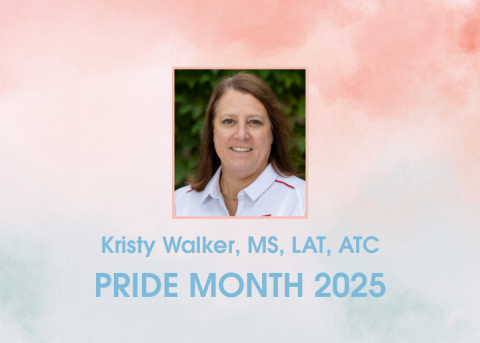
In the United States, one in every four to five adolescents meets the criteria of a diagnosable mental health disorder, with 30 percent meeting criteria for an anxiety disorder, 19 percent for a behavioral disorder, 11 percent for a substance abuse disorder, 9 percent for ADHD and 3 percent for an eating disorder.
To help shed a light on the issue and empower athletic trainers with knowledge, the National Athletic Trainers’ Association will publish a series of mental health-related blogs throughout May, which is Mental Health Awareness Month.
“Most people categorize catastrophic injuries as physical injuries. We’re discovering more and more that catastrophic injuries also deal with mental health,” said Tim Neal, MS, AT, ATC, assistant professor at Concordia University in Ann Arbor, during his Youth Sports Safety Summit presentation, “Mental Health Concerns and Strategies for Student Athlete Wellness,” March 15 in Washington, D.C.
The rate of suicide in the United States has increased since 2000, with someone committing suicide every 13.7 minutes.
“One in every six high school students seriously consider attempting suicide annually in the U.S. and one in every 13 high school students attempt suicide one or more times annually in the U.S.,” said Neal, adding that major depression symptoms develop between age 11 and 14. “We need to go all out to help people with psychological concerns.”
It’s not just high school students who are affected—suicide is the third leading cause of death among NCAA student athletes, said NCAA Chief Medical Officer Brian Hainline, MD, during his presentation, “The Mental Health Landscape in Sport,” at the second annual Collaborative Solutions for Safety in Sport National Meeting March 22-23 at the NCAA headquarters in Indianapolis.
“Mental health isn’t apart from, but rather a part of athletic health,” said Hainline, adding that the NCAA created the book “Mind, Body and Sport” as a mental health resource.
Neal said when it comes to student athletes, it’s important to remember that they’re students first and foremost, and they deal with the same issues all students do, such as bullying, dating abuse and drug and alcohol abuse.
“Why are student athletes stressed or why are they anxious? It’s really ends up being the same reason anyone is stressed or anxious: sleep difficulties and interpersonal relationships,” Hainline said. “When you’re at that age and something happens that’s negative in an interpersonal relationship, you can feel like the world has come to an end.”
In addition, Hainline said there are athlete-specific concerns student athletes deal with, such as pressure to perform, a culture of “toughness” that may hinder an individual from seeking help, time demands, academic stress and injury.
“Student athletes, they look fit so, basically, they must be healthy and they must be immune to things like depressive thoughts and suicidal thoughts,” Hainline said. “At times, student athletes are idolized and worshiped as heroes, so of course there can’t be something dark and dire inside of them.”
Neal said injuries present not only physical challenges to student athletes, but also psychological challenges. An injury disrupts the player’s routine, separating them from their team and threatening their identity as an athlete. This can result in feelings of frustration, anger, depression and uncertainty. There is also a fear of re-injury, which can be emotionally taxing.
Neal and Hainline said athletic trainers are in unique positions because of their close relationships with student athletes. They are on the front lines, and can see the red flags of a mental health crisis.
“There is a stigma surrounding seeking care, but they have a condition and it needs treatment,” Neal said.
NATA has a bevy of resources available to help athletic trainers assist athletes through a crisis, such as an inter-association mental health best practices document. Another resource athletic trainers can turn to is Mental Health America, an NATA liaison organization. MHA has created the B4Stage4 campaign, which encourages people to recognize early signs of a mental health concern and seek help before their symptoms develop into a full-blow crisis. Visit the B4Stage4 website to learn more about the signs and symptoms of a mental health condition, the stages of mental health conditions and options available for getting help.
In honor of Mental Health Awareness Month, MHA has created the hashtag #mentalillnessfeelslike to encourage conversation and support. Use the hashtag throughout the month of May and your Tweets, Pinterest pins, Vines and posts to Instagram and Tumblr will be featured on the MHA website. You can also post videos, images or words describing your personal experience with mental illness directly to the website.
Next week’s Mental Health Awareness Month blog post will examine caring for athletes who are dealing with mental health disorders.





